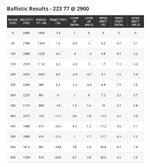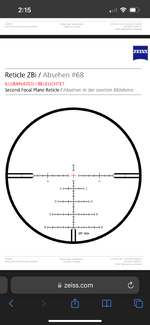This answer is going to straddle the fence a little, but here we go....
First off, you need to define your desired accuracy. If you are looking at Minute of Elk, and not, consistent, sub-MOA accuracy a BDC reticle will be fine to 400+/- yards (further the more practice time one puts in). If your desired accuracy is sub-MOA at all distances, dialing elevation will be the answer.
As stated in an earlier reply, there are many reasons for this; but a big one is the eye's natural desire to look at the center of the reticle (although practice will solve some of this). Under stress (and the opportunity to harvest your desired game animal is stress) you will revert to your lowest level of training. So if a hunter does not practice with that specific rifle and reticle, you will naturally try to revert to the center of the reticle, causing the potential for a significant reduction in accuracy and/or missed shots or wounded game.
Moreover, a "busy" reticle with numerous elevation hashmarks can be very accurate, but again it takes practice. If a hunter has memorized the subtensions, and can place the intended target on a specific elevation mark, it can be accurate and repeatable. This is an area we train our shooters on so they can place accurate shots, under stress, in the event the need arises.
To summarize, reticle-based elevation adjustments, or hold-overs, are a solid option. To achieve the necessary accuracy, practice is required.
Moving on to dial turrets with budget-minded scopes. Let me start by saying, I would prefer a mediocre rifle, and use the cash saved on the firearm to purchase better quality glass. I can make most rifles shoot better with some fine-tuning on the workbench and the loading bench, you can never make improvements to mediocre glass. For sub-MOA accuracy, using a turret with known click values will increase accuracy at distance over holdovers.
That said, there are budget-friendly manufacturers that produce decent glass on a budget. To save on the hate mail, I will keep it general and not specific. Each of these scopes will return to zero.....for a while. There are two main issues with this, and both can be overcome.
1) The adjustments in the rector dial, for lesser-quality scopes, are not typically true. Meaning .25MOA or .1mil is NOT accurate. You can, however, determine the exact value of each click by spending some time on the range and measuring the point of impact over/under the elevation adjustment. This takes time and ammo, but you can gain good data and understand how to dial your rifle accurately. AND you can make the click value adjustments for your scope/rifle in most ballistic apps; taking out the guesswork.
2) Rector spring quality! This is the fly in the ointment.....the more you use the dial, the weaker the spring becomes. This is true with ALL scopes and should be considered a wear item. In lesser-quality scopes, this spring will lose spring tension more rapidly than its more expensive kin. This causes two issues:
a) Zero shift, or as stated in the thread, failure to return to zero.
b) change in elevation click value
In effect, the more you dial the turret, the weaker the spring becomes. To overcome this, set a schedule to take the rifle to the range and verify click values are unchanged and the rifle returns to your set zero. IF there is a change, my suggestion is to send the scope back for rector springs and new gas. This will breathe some new life into the scope.
In conclusion, this option gets you the cake and you can eat it too. You have an affordable dial turret scope with a functional reticle, now you have the option to do both depending on your situation.
Walked that fence like a pro. LOL








